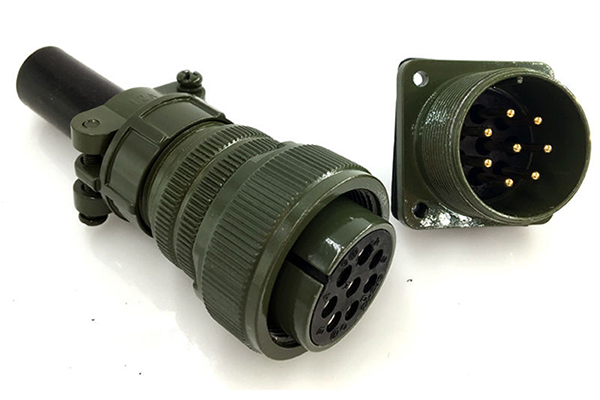Connectors are an essential component of many medical devices, from monitoring equipment to life-saving devices like defibrillators. Medical connectors allow for the safe and reliable transmission of electrical signals and power between devices. However, the use of connectors in medical applications requires special considerations due to the critical nature of medical devices and the need for patient safety. In this article, we will discuss the special considerations that must be taken into account when designing and using connectors in medical applications.
Connector Requirements in Medical Applications
Medical connectors must meet specific requirements to ensure their safe and reliable operation. These requirements can be broadly categorized into four areas:
Electrical requirements
Medical connectors must be designed to meet specific electrical requirements, including voltage, current, and impedance. The connectors used in medical devices are often required to transmit sensitive signals, such as electrocardiogram (ECG) and electroencephalogram (EEG) signals, that require low noise and high accuracy. Connectors must also be designed to ensure that they do not generate electromagnetic interference (EMI) that could interfere with other medical devices.
Mechanical requirements
Medical connectors must be designed to withstand the physical stresses of use in a medical environment. Connectors must be able to withstand repeated mating and unmating cycles, as well as be resistant to damage from impact, vibration, and bending. Connectors must also be designed to be easy to use, with a secure locking mechanism that prevents accidental disconnection.
Environmental requirements
Medical connectors must be designed to operate in a wide range of environmental conditions. They must be resistant to moisture, temperature extremes, and exposure to chemicals and other substances commonly found in medical settings. Connectors must also be designed to be easy to clean and disinfect to prevent the spread of infection.
Regulatory requirements
Medical connectors must comply with various regulations and standards to ensure their safe and effective use. These regulations cover a range of areas, including electrical safety, EMC, biocompatibility, and sterilization. Compliance with these regulations is essential to ensure the safety and efficacy of medical devices.
Material Selection for Medical Connectors
The materials used in medical connectors are critical to their performance and safety. The materials must be carefully selected to ensure that they are biocompatible, resistant to corrosion, and can withstand the harsh environments in which they are used. Some commonly used materials for medical connectors include stainless steel, titanium, and medical-grade plastics such as PEEK.
The biocompatibility of the material is of utmost importance as connectors often come in contact with the patient’s skin. Biocompatibility refers to the ability of the material to perform its function without inducing a toxic, allergic, or other adverse reaction in the patient’s body. The material must also be compatible with any sterilization methods used in medical settings.
Connector Design Considerations for Medical Applications
Connector design is critical in ensuring the safe and reliable operation of medical devices. There are several design factors that must be taken into consideration when designing connectors for medical applications.
Design factors
Design factors that must be taken into consideration include the size and shape of the connector, its form factor, and the type of contacts used. Connectors must be designed to fit securely into the medical device, with a secure locking mechanism that prevents accidental disconnection.
Shielding and grounding considerations
Connectors used in medical devices must be shielded to prevent interference from other electronic devices. They must also be grounded to ensure that any electrical charges are dissipated safely.
Safety features
Safety features such as keying and color-coding are critical in preventing accidental connections between incompatible devices. Keying refers to the use of specific shapes or features on the connector that prevent it from being connected to the wrong device. Color-coding can be used to help identify specific connectors and their corresponding devices, making it easier for medical personnel to quickly identify and connect the correct devices.
Testing and Certification for Medical Connectors
Testing and certification are critical components of ensuring the safety and reliability of medical connectors. There are several industry standards and regulations that govern the testing and certification of medical connectors, including IEC 60601-1, ISO 10993, and USP Class VI.
Importance of testing and certification
Testing and certification are important because they help to ensure that the connectors are safe and reliable for use in medical applications. Testing involves subjecting the connectors to a variety of conditions to ensure that they can withstand the stresses of use in a medical environment. Certification involves providing evidence that the connectors have been tested and meet the required standards.
Industry standards and regulations
IEC 60601-1 is the standard for the safety and effectiveness of medical electrical equipment. It provides guidelines for electrical safety, EMC, and other aspects of medical device design. ISO 10993 is the standard for biological evaluation of medical devices, which covers the biocompatibility of the materials used in the connector. USP Class VI is the standard for the biocompatibility of plastics used in medical devices.
Testing methods and protocols
Testing methods and protocols for medical connectors vary depending on the specific requirements of the connector. Common tests include environmental testing, mechanical testing, electrical testing, and biocompatibility testing. Connectors must be tested both individually and as part of the medical device to ensure their compatibility with the rest of the device.
Conclusion
Connectors are critical components of medical devices, and their safe and reliable operation is essential to ensure patient safety. Medical connectors must be designed to meet specific electrical, mechanical, environmental, and regulatory requirements, and careful consideration must be given to material selection, connector design, and testing and certification. By taking these factors into consideration, medical device manufacturers can ensure that their connectors are safe and effective for use in medical applications.




